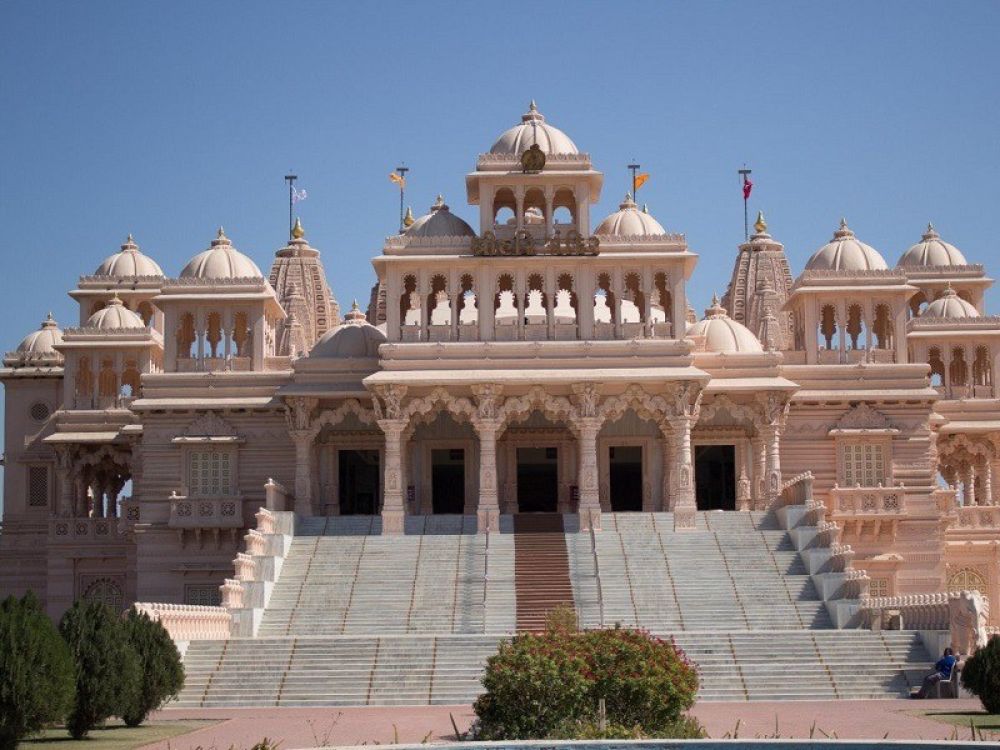

Sri Hari Mandir, located in the serene town of Porbandar, Gujarat, is a fairly recent addition to the spiritual circuit of India, yet it has drawn thousands of faithful and tourists alike, keen to explore its spiritual offerings and architectural beauty. In contrast to ancient temples that dot the Indian landscape, the history of tourism in relation to Sri Hari Mandir is not deep-rooted in centuries; instead, it is a tale of rapid growth in recent years.
The foundation of Sri Hari Mandir, inaugurated in 2006, coincides with the rise of spiritual tourism in India. Initially built to cater to the local population's spiritual needs, its grandeur and the peace it bestowed quickly appealed to a wider audience. The temple was established by Pujya Bhaishri Rameshbhai Oza, a revered religious leader, and has since become a beacon for devotees of Vedic traditions and Sanatan Dharma.
The temple exhibits a modern take on traditional Vedic architecture, known as Vastu Shastra, and is noteworthy for its intricate carvings that cover its walls and pillars. This blend of modernity and tradition has attracted tourists interested in India’s architectural evolution. The harmonious combination of grand scale and intricate detail earns Sri Hari Mandir a special place in the heart of pilgrims and culture enthusiasts alike.
Since its inception, Sri Hari Mandir has seen a significant growth in the number of visitors, not just for its spiritual offerings but also as part of the broader trend of experiencing cultural tourism in Gujarat. The state government's push towards promoting tourism, under campaigns such as "Vibrant Gujarat", has contributed to the increasing popularity of this temple among domestic and international tourists.
Another aspect of this temple that draws visitors is its focus on educational and spiritual retreats. The Sandipani Vidyaniketan, an educational campus adjacent to the temple, provides a place for traditional Vedic education as well as yoga and meditation retreats, further strengthening the temple’s appeal as a diverse tourist destination.
The temple has also become synonymous with the celebration of various Hindu festivals like Janmashtami, Shivratri, and Navratri, which are celebrated with great fervor, attracting an even larger influx of tourists during these times. Live performances, spiritual discourses, and mass participation events create an engaging environment that is a big draw for visitors seeking to experience Indian festivals firsthand.
In recent years, the rise of wellness tourism has seen a significant impact on places like Sri Hari Mandir. Tourists are keen on combining their travel experiences with wellness retreats that promise rejuvenation of both the body and the soul. Sri Hari Mandir, with its serene environment and facilities for spiritual growth, perfectly caters to this demand.
There is also a growing trend of sustainable and responsible tourism. Sri Hari Mandir's approach to maintaining ecological balance and promoting local culture aligns with the values of conscious travelers who look for destinations that contribute positively to the environment and local communities.
Although its history in tourism is relatively short, Sri Hari Mandir in Porbandar has quickly established itself as a must-visit destination for both spiritual seekers and cultural tourists. Its rise reflects the broader trends in Indian tourism, where visitors seek to immerse themselves in local traditions, spirituality, and an evolving architectural heritage. As tourism in India continues to evolve, Sri Hari Mandir stands as a shining example of the country's ability to blend the ancient with the modern, the sacred with the educational, attracting global visitors to its tranquil sanctuary.